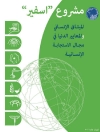Why are so many contemporary comics and graphic narratives written as memoirs or documentaries of traumatic events? Is there a specific relationship between the comics form and the documentation and reportage of trauma? How do the interpretive demands made on comics readers shape their relationships with traumatic events? And how does comics’ documentation of traumatic pasts operate across national borders and in different cultural, political, and politicised contexts?
The sixteen chapters and three comics included in Documenting Trauma in Comics set out to answer exactly these questions. Drawing on a range of historically and geographically expansive examples, the contributors bring their different perspectives to bear on the tangled and often fraught intersections between trauma studies, comics studies, and theories of documentary practices and processes. The result is a collection that shows how comics is not simply related to trauma, but a generativeforce that has become central to its remembrance, documentation, and study.
สารบัญ
1. Introduction: Documenting Trauma in Comics. Section I: Documenting Trauma- 2. Hierarchies of Pain: Trauma Tropes Today and Tomorrow.- 3. Emotional History and Legacies of War in Recent German Comics and Graphic Novels.- 4. The Past That Will Not Die: Trauma, Race and Zombie Empire in Horror Comics of the 1950s.- 5. Exploring Trauma and Social Haunting Through Community Comics Creation.- 6. Comic: ‘Documenting Trauma’.- Section II: Traumatic Pasts.- 7. Traumatic Moments: Retrospective ‘Seeing’ of Violation, Rupture and Injury in Three Post-millennial Indian Graphic Narratives. – 8.
This Side, That Side: Restoring Memory, Restorying Partition.- 9. Visual Detention: Reclaiming Human Rights Through Memory in Leila Abdelrazaq’s
Baddawi.-
10. Comic: Crying in the Chapel.- Section III: Embodies Histories.- 11. Folding, Cutting, Reassembling: Materializing Trauma and Memory in Comics.- 12. ‘To Create Her World Anew’: Charlotte Salomon’s Graphic Life Narrative.- 13. Una’s
Becoming Unbecoming, Visuality, and Sexual Trauma..- 14. Discourses of Trauma and Representation: Motherhood and Mother Tongue in Miriam Katin’s Graphic Memoirs.- 15. Comic: First Person Third.- Section IV: Graphic Reportage.- 16. Comics Telling Refugee Stories.- 17. Migrant Detention Comics and the Aesthetic Technologies of Compassion.- 18. Comics as Memoir and Documentary: A Case Study of Sarah Glidden.- 19. Afterword.
เกี่ยวกับผู้แต่ง
Dominic Davies is a Lecturer in English at City, University of London. He holds a DPhil and British Academy Postdoctoral Fellowship from the University of Oxford. He is the author and editor of several books, articles, and chapters, and his most recent monograph is Urban Comics: Infrastructure & the Global City in Contemporary Graphic Narratives (2019).
Candida Rifkind is a Professor in the Department of English, University of Winnipeg, Canada. In addition to over a dozen journal articles and book chapters in comics studies, she co-edited Canadian Graphic: Picturing Life Narratives (2016) and is co-editor of the Wilfrid Laurier UP book series Crossing Lines: Transcultural/Transnational Comics Studies.
Contributors
Haya Alfarhan, King’s College London, UK
Ana Baeza Ruiz, University of Leeds, UK
Hillary Chute, Northeastern University, USA
Michael Goodrum, Canterbury Christ Church University, UK
Ian Hague, London College of Communication, UK
Alexandra Lloyd, University of Oxford, UK
Sarah Mc Nicol, Manchester Metropolitan University, UK
Nina Mickwitz London College of Communication, UK
Bruce Mutard, Independent Artist, Australia
Katalin Orbán, Eötvös Loránd University, Hungary
Emma Parker, University of Leeds, UK
Johannes C. P. Schmid, University of Hamburg, Germany
A. P. Payal, University of Delhi, India
Rituparna Sengupta, Indian Institute of Technology, Delhi, India
Nicola Streeten, London College of Communication, UK
Eszter Szép, Eötvös Loránd University, Hungary
E. Dawson Varughese, Snr Fellow, Manipal Centre for Humanities, Manipal Academy of Higher Education (MAHE), Manipal, India












